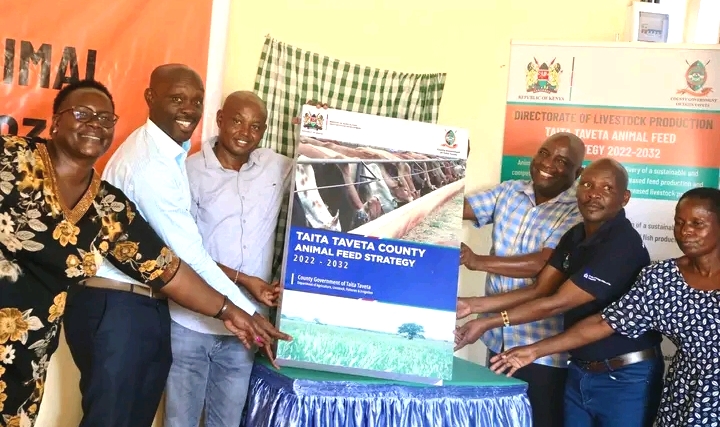The County government of Taita Taveta has joined counties eyeing the livestock export market following the official launch of the Livestock Feed Strategy 2022 – 2032 on Thursday at Panlis in Mwatate.
The 10-year plan aims at promoting efforts to address the livestock feed deficit in the county which currently stands at 60%.
According to the Strategy, investor participation and commitment from key value chain players in the livestock sector will be integral in addressing challenges related to livestock feed production and productivity, feed market, animal feed quality, processing and value addition, profitability in feed value chains, creating an enabling policy environment and creating a sustainable physical environment for livestock production.
“76% of the county households depend on agriculture for living with livestock contributing to 40% of the total earnings in the sector. This calls for concerted efforts from all stakeholders in developing a competitive animal feed industry to aid the realization of our agenda to commercialize the sector,” said Erickson Kyongo, the CECM for Agriculture, Livestock, Irrigation and Blue Economy.
The Strategy will also guide the county and partners in coming up with strategies to address shocks related to drought, poor grazing management practices, poor on-farm feeding practices, effects of pests and diseases and encroachment of invasive vegetative species, leading to significant losses in the livestock subsector.
It will also guide partners’ contribution to the realization of the 3rd County Integrated Development Plan and the Governor’s manifesto.
“Our main focus is on feedlot production in the ranches for quality beef as per the export market demand. We are keen to support the Dairy and milk value addition sector through this strategy,” Habert Nyambu, the County Director of Livestock and Blue Economy said.
He added that the County is currently supporting dairy cooperatives through various initiatives to aid the dairy value chain including milk aggregation, value addition, governance in cooperative societies and production of pasture and fodder.
The County Chief officer for Agriculture, Stephen Mcharo, called on parents and senior ranch managers in the county to integrate the youth in the agriculture and livestock sector for continuity to demystify the notion that they are unfit to comprehend matters related to land and its management.
“Given the attention they deserve, agriculture and livestock sectors can transform this county to a positive trajectory in terms of revenue and employability. This will only be real if the youth are part of it,” he said.
Mercy Kambe reiterated that women have a significant contribution in the County’s economy hence the need to accord them active participation if positive results of the strategies are to be realized.
Food and Agriculture Organization – Kenya (FAO) Policy Department Officer Joel Imitira reiterated that their commitment to strengthen their collaboration with the County is part of their support to Arid and Semi-Arid lands (ASAL) in Kenya.
By Michael Oduor
oduormichael2021@gmail.com
Get more stories from our website: Sacco Review.
For comments and clarifications, write to: Saccoreview@shrendpublishers.co.ke
Kindly follow us via our social media pages on Facebook: Sacco Review Newspaper for timely updates
Stay ahead of the pack! Grab the latest Sacco Review newspaper!



